This article is dedicated to search engine optimization (SEO) and website SEO analysis, featuring an SEO Audit Template. You will also learn how these procedures impact website promotion. So the plan is the following: first, we discuss the importance of optimization; after that, we cover the theoretical part of auditing; and finally, we analyze a ready-made website audit report. This free information about SEO analysis will come in handy to everyone willing to develop their business and ready to use all modern approaches and templates to achieve this goal.
SEO beginners and online store owners often ask simple questions regarding SEO auditing:
- How to do an SEO audit template?
- How to perform an SEO audit?
- How to do a local SEO audit?
- How to audit the offsite SEO of websites with many backlinks?
- How to conduct an SEO keyword audit on a single page?
- What are the best full SEO audit samples?
- What are the unique features of individual SEO audit templates?
You can find more samples of the SEO audit templates here.
Why are SEO and SEO Analysis Important?
Imagine a man who decided to open a first-class pub with low prices, a great assortment, and a free striptease. He believes that all the mentioned benefits are enough to create a successful business, quickly build a client base, and start making a profit. But the reality is different. If nobody learns about the pub, its owner will never have a stable income.
Consider a pub that nobody knows about.

The unknown pub will periodically have some casual earnings and spend much time on promotion. During all this time, the owner will have to survive, relying only on his own budget. If the money runs out, after several months, the business will close, be set for a bankruptcy auction, and sold for next to nothing.
An unknown pub becomes a place without customers and income.

Now, we will try to save the situation. We take a photo of the pub, describe it with several short sentences, and place it on the front of a popular local newspaper. Simultaneously, we use other advertising methods to make sure the maximum number of people learn about the new place.
We add the information about the new pub to the front page of a local newspaper.

Once the right sources feature the pub, the first customers will immediately come. Then everything will depend on the owner. If he creates a welcoming atmosphere and provides a customer-focused service, the pub will quickly become a beloved and frequently visited place. In the next stage, a large number of visitors should convert to a profitable business that can be expanded and developed. Otherwise, even the best advertising will prove to be useless.
A recognizable pub becomes a place with satisfied and loyal customers.

So, if you want a competitive website, search optimization and SEO analysis using an audit template are a must. After-audit SEO will help to promote your website to the TOP 10. At the same time, auditing and SEO analysis will allow you to consolidate positions despite ever-changing conditions and the actions of your competitors.
Theory of an SEO Audit
After studying the theoretical part of SEO auditing, you will know what effective SEO is and how to check it using handy templates. You will also understand the interrelation between SEO and marketing, the importance of usability testing, the logic of audit templates, and learn how to conduct a website audit check.
Before we start, let’s look at the samples of existing optimization methods:
- White Hat SEO: These are all the allowed methods used to promote a site and compete with other web resources. This is the SEO check we are talking about in this article dedicated to auditing templates.
- Grey Hat SEO: This is a sample of the methods that aren’t explicitly forbidden; nevertheless, they may result in a search penalty. If this happens, your website will be excluded from the search results and lose traffic.
- Black Hat SEO: These are the sample forbidden methods used to include a website into the TOP 10 promptly. Usually, such SEO techniques allow circumventing search algorithms and temporarily raise the SEO ranking of a site. Yet, when the problem is audited and detected, the gained positions are nullified, and search engines may ban the website. The ban means that the site is excluded from search results.

White hat SEO also isn’t that simple. Search algorithms are constantly changing, updating their SEO requirements. Thus, all the current recommendations for SEO may become absolutely irrelevant in a year. So if you plan to consolidate your top positions for a long time, you need to stay current on the topic, audit and follow trends, use smart templates or hire an SEO professional. There is no other easy way to boost your SEO.
What is SEO, and How It Differs from PPC
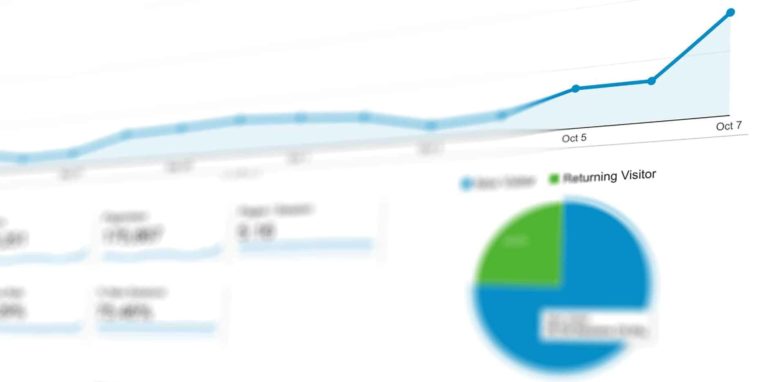
Many website owners question the necessity of SEO promotion and SEO audits. Isn’t getting the necessary results with contextual advertising easier, even though it’s not free? There is no right answer suitable for all cases. Everything depends on the situation. If you have chosen your subject and plan to work in this direction for over a decade, opt for SEO and try the useful audit templates described below. Contextual advertising is more convenient if you are just trying out a niche. Anyway, when choosing a promotion method, always remember your goals:
| SEO | Contextual advertising |
| A low-quality website that cannot answer direct user requests will never be included in the TOP 10. Moreover, even a well-designed site with regularly updated content doesn’t always get the leading positions. SEO is a complex process that requires constant effort and checks. | Almost any website, which does nothing illegal, can use contextual advertising for promotion. You just need to customize the necessary number of ads and pay for them. |
| If a niche isn’t oversaturated, on average, it takes around 2-4 months to get to the TOP 10. When the competition is high, the expected term increases to 6-12 months. In some cases, the first noticeable result will appear in several years. Everything depends solely on the level of your competitors. | The whole procedure takes one day. |
The owners of newly created websites often combine contextual advertising and SEO promotion. This approach is called SEM or search engine marketing.
The Main Components of Website SEO

This is how the SEO ranking algorithm works:
- Search bots regularly check the web, saving information about all existing sites.
- Based on the collected data, every site is assigned a value that may be compared to a book page number. The main difference is that users can find the necessary websites not only by their name but also by their content.
- After that, the websites are ranked. This is done with complex formulas, which are constantly updated, consist of hundreds of SEO parameters, and are unique for each search engine.
The described algorithm shows that the quality of SEO depends on content and usability:
| Content | Usability |
| A website must include unique information with useful tips and fully answer the corresponding request entered by a user. Today, long publications that require close reading and detailed information on the topic are highly popular. Videos, audio, and graphics are also appreciated. | A website must not contain viruses or be displayed only as a simple one-page image. It also shouldn’t include any damaged elements, broken links, or similar SEO issues. Even great content won’t save your SEO ranking if something doesn’t work. Learn more. |
How to Implement an SEO Strategy

This section covers the main stages of website SEO. Remember that these steps may vary depending on the project, competition level, target audience, and other factors.
You should conduct a site audit to assess the current positions of your web resource. Ideally, developing an SEO strategy before the website launch is better. In this case, an SEO specialist may help to save time, cut costs, and avoid unnecessary problems.
- First, you need to select priority topics that can be used for SEO promotion. This step allows large online stores to develop a long-term SEO promotion strategy for all product categories. In contrast, other websites get a chance to predict the traffic after the implementation of the SEO strategy.
- Work out your site structure. This is one of the most time-consuming types of work since you need to estimate how to publish a large volume of content in the future. It’s also important to remember that after implementing the planned SEO strategy, you may need to add new material. Make sure it will match the existing resource.
- Develop a semantic core. A specialist carries out a detailed SEO analysis of user requests and prepares the selection of keywords.
- A technical task for auditing the first SEO texts is prepared.
- Specialists conduct an SEO analysis and fix small technical details after the audit. This stage allows for detecting the flaws of the first publications to optimize content in the future properly.
This is how you should start bringing an SEO strategy to life.
How to Do an SEO Analysis?
A website audit is a multi-stage check that should be conducted at least once every 1-3 months. This SEO analysis solves a whole range of tasks.
Below you’ll find the algorithm sample of a comprehensive website audit roughly divided into six stages.
Stage #1. Analyze the demand and competitors
Understand your users’ location and average age and define the type of devices on which your site is opened the most frequently. Evaluate the website’s convenience. Analyze your audience’s interests, and make sure they match the topics covered on the site.

Stage #2. Conduct a technical SEO audit
In most cases, a technical audit is a part of SEO analysis. Now you need to check the indexing, remove duplicates, evaluate the condition of tech files, and make sure the website is secure. Here are the general steps to reaching your SEO goals:
- Analyze all auditing reports on the ranking of your web pages in Google, Bing (or other search engines) webmaster dashboards. Pay attention to errors and the ways to fix them.
- Check the indexing. Take a look at the server response code, broken links, and URLs of external links, and decide whether redirects are necessary. Record the errors, present the analysis as an audit report and hand it over to your developers.
- Check the robots.txt file manually or using validators. It has to close only the pages that search bots will not monitor.
- Check the sitemap file. Make sure the dates, attributes, and priorities are correct. The path to your sitemap must be specified in the robots.txt file, and only the pages that need indexing must be displayed.
Having done these actions, proceed to the next stage.
Stage #3. Audit on-page optimization
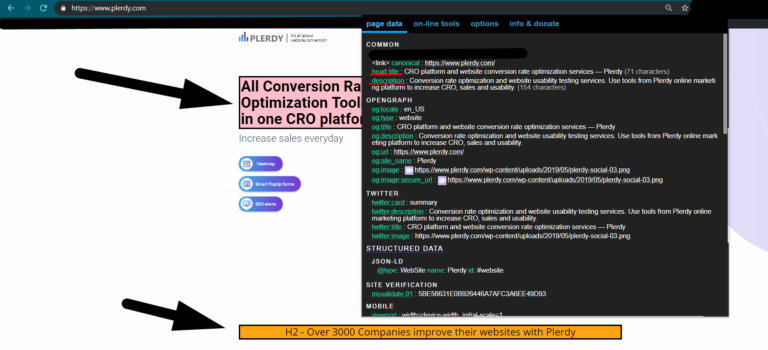
We can divide auditing on-page SEO into a few steps as well. These are:
- Analyze URL addresses. Non-English websites should transliterate URLs. URLs shouldn’t be too long and must include intents and SEO keywords. Word gaps should be substituted with a hyphen instead of a space.
- Check SEO titles and descriptions. A title must have no more than 60 characters, include keywords and intents, and nudge users into clicking. A description must consist of short informative sentences which include keywords and supplement a title.
- Check the H1-H6 headings. Headings shouldn’t be used in the elements of design and functional elements. An H1 heading must be used once per page, whereas a clear hierarchy must be kept for the remaining headings.
This is how we analyze on-page SEO.
Stage #4. Analyze traffic

To analyze your traffic in detail, do the following:
- Check and analyze the CTR of the clicked requests. To do that, rank them upwards, remove the entries with the least impressions and enter the remaining requests into the search engine to understand your site’s appearance.
- Analyze cannibalization: when a search engine displays several parts of your website for a single request. During the check, pay special attention to ones that get approximately the same amount of traffic (except for cases when this is done intentionally and when a part of the traffic is taken by AMP pages created for quick display on mobiles).
It is clear with traffic analysis. Now let’s consider behavioral factors.
Stage#5. Run an analysis of behavioral factors

To understand what affects user behavior on your website:
- Take a look at the exit pages. These are those where users decide to leave your website. For example, if an online store’s exit page is a cart one, everything is correct. If users leave a website before going to a cart, there may be an SEO problem with other transitional pages.
- Work with user statistics. Define the average number of views per day, average time spent on the website, the most popular sections, and the site parts with the highest bounce rate. Watch your users and find out how they interact with the website. The more data you collect, the more problems you will manage to fix. The Plerdy heatmap is a great way to deal with that. Read Benefits of Plerdy Heatmap to learn more about this tool.
Thus, you will know how to improve your website to impact user behavior positively.
Stage #6. Analyze external links
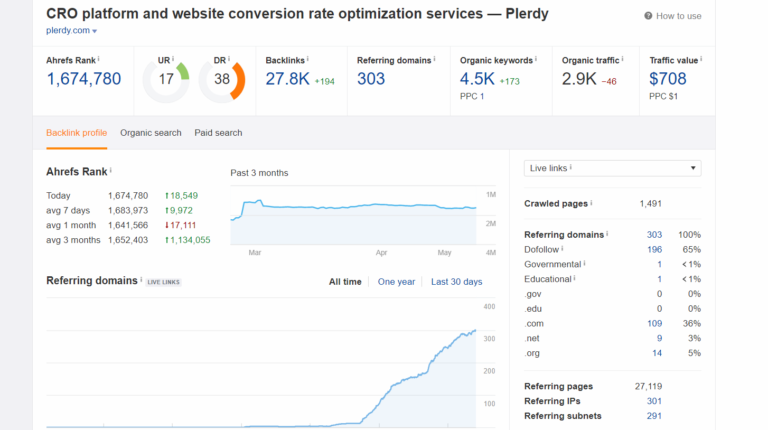
Auditing external links is an essential part of SEO. Here’s a quick audit guide:
- Check diversification.
- Manually test all links for spamming.
- Check whether the links are evenly distributed among website acceptors.
As a result of the audit, you will obtain crucial SEO data.
Compiling an SEO Audit Template
Preparing an audit template is one of the most time-consuming stages of the entire SEO analysis. You cannot just take a ready-made template and use it for auditing. Every site is unique and needs a separate algorithm for analysis. Therefore, you won’t be able to compile a decent audit template without a profound website analysis. Thus, analyzing your site before choosing the best SEO audit template is a must.
Technical SEO audit template of store.google.com
Let’s now look at some indicators usually included in almost every SEO audit template.
1. Website mirror and URL format
A website must have the main site mirror that can be used with or without the www prefix. Other mirrors must be 301 redirected to forward the traffic to the main website.
If we open the main page with the www prefix and a 301 redirect isn’t activated, that’s a problem. This is already a problem that needs to be fixed.
A nonworking 301 redirect on the main mirror page.

In case we open it with the HTTP protocol, a 301 redirect is properly activated. There is no need to take any additional actions.
2. Robots.txt and sitemap.xml
A robots.txt file, added to the site, indicates which pages should not be indexed by Adsbot-Google.

Since the robots.txt file restricts pages from Adsbot-Google, it should also restrict them from AdsBot Mobile Web Android and AdsBot Mobile Web. The website won’t be properly indexed on mobile devices if this is left unconfigured.
A sitemap.xml file has been added and configured for 36 languages supported by the site. This equals 1917 translated pages. The developers also added an alternate attribute and an hreflang tag to avoid duplicates.
3. HTTP headers and the 404 error
This is another important SEO aspect included in every audit template. If a website doesn’t have the requested URL address, a server must return a 404 error. The design of the 404 error should allow visitors to continue using the site.

If needed, you may customize the 404 error screen with text and a unique design matching your site. Otherwise, browsers will use a standard design.
4. Broken links
Broken links lead to non-existent pages, documents, files, or images. This harms behavioral factors and slows down SEO promotion. Therefore, make sure all broken links and detected and removed promptly.
The URL check-in Screaming Frog SEO Spider – all 1741 links work.

5. Clean URLs
All parts of the website should have clean, user-friendly URL addresses. For example, instead of “- site.com/?pag=1&24%”, use “site.com/catalog”. Relevant words in the URL provide search engines with more information about the article or website part.
We open the Phones page and select Pixel Cases, and a page with accessories appears with several default filters. Such a technical solution results in an unreadable URL address.

6. Title, description meta tags
A good SEO audit template should help you analyze the title, description, and meta tags. The title is indicated with a title tag. It’s visible to both users and search bots. Using this tag, people select the websites most relevant to the entered request.

A description meta tag supplements the content of a title. The description can be expanded to several sentences that briefly describe the main idea of the viewed site category. The description is important for search engine promotion and must be used everywhere. If a site has a lot of categories, and you cannot indicate descriptions manually, use programs that can do this automatically.
7. Optimized headings
Headings help form the structure of a site, making its content more user-friendly and search-engine friendly. Headings have a six-step hierarchy and appear from the largest (H1) to the smallest (H6).
The analyzed website has parts without an H1 heading or with H1 duplicates.
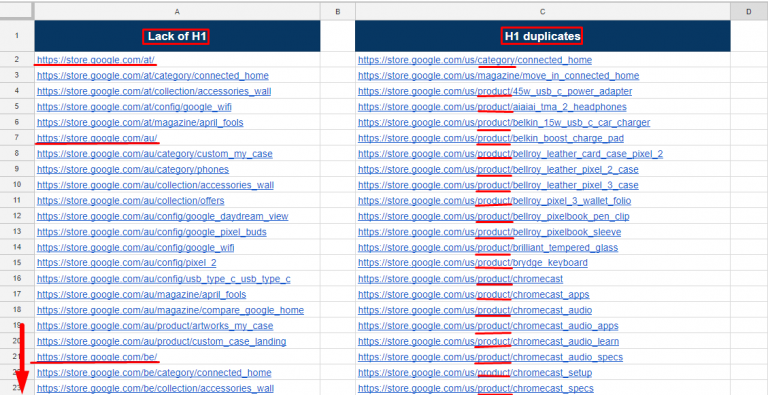
To create simple and convenient navigation, the size of headings shouldn’t be chaotic. Change the hierarchy from H1 to H6 only if this really helps to structure the content.
8. Speed
75% of users will close a site if its load time exceeds 4 seconds. Moreover, 50% of users expect web pages to download in less than 2 seconds.
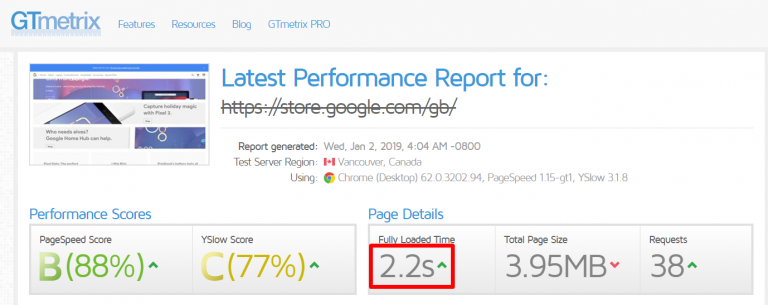
It’s better to test all its categories if a site is small. You can use Pingdom Website Speed Test and Google PageSpeed Insights to do this. If there are a lot of pages, you will need a random auditing check. In our case, we have tested the main, category, and product parts.
9. Micro markup
Micro markup helps search bots and other functional programs navigate a site’s structure. Otherwise, the information will be processed more slowly, and the indexing will take additional time.
Micro markup varies greatly and should be selected individually for each website. However, the most common types are breadcrumbs and document rating stars.

10. Pagination pages
Pagination pages aren’t promoted in search engines and are used to display a catalog of products. When customizing pagination pages, ensure they don’t result in duplicates and unnecessary meta tags. Otherwise, this will adversely affect indexing in search results.
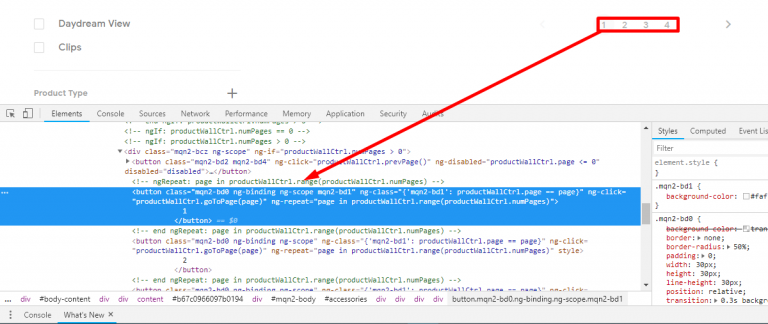
11. Extra code on web pages
An SEO audit template can also be used to check for extra code. If there is extra code on your web page, it can make it more difficult for search engines to analyze its content. This will harm the indexing time of problematic pages and may increase the load speed.
Large block styles must be added to an external CSS table.
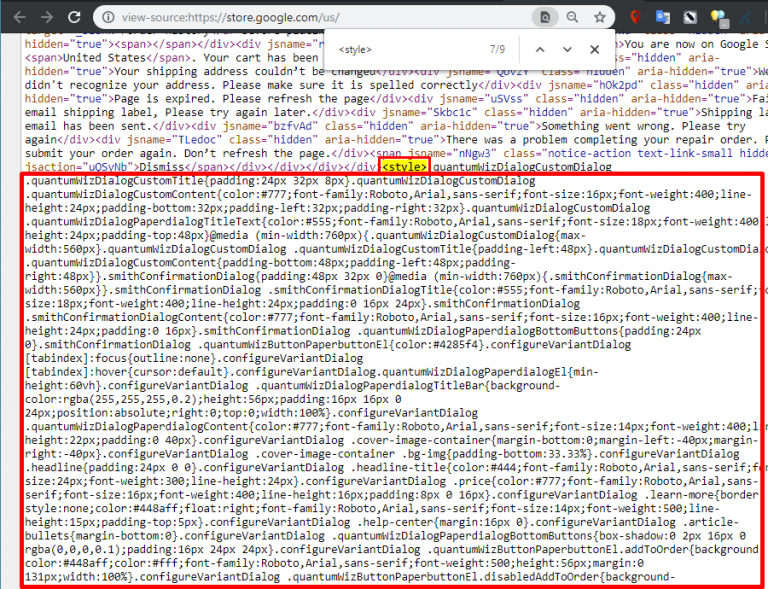
12. Duplicate website elements
Duplicate pages reduce the uniqueness of published content and negatively affect the site’s ranking in search results. Identical text fragments are often found on the filter and pagination pages with numerous product cards that need a brief description.
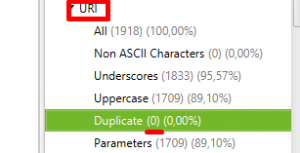
13. A sequence of product page links
If a website has an excessive number of improperly configured links, it can lead to critical SEO errors, such as duplicate pages, decreased site load speed, and indexing issues.
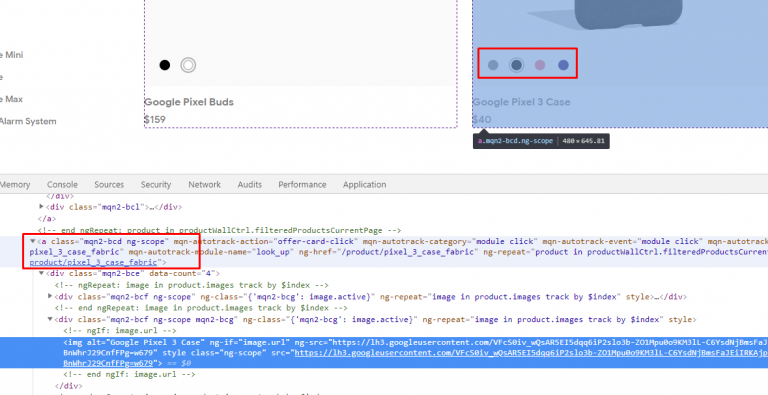
14. Image optimization
Image optimization is another important component of a good SEO audit. This helps search engines to process the content of a website and allows users to understand the content of an image even if, for some reason, it isn’t displayed. Additionally, for better optimization, you can use a title tag, which is a short text displayed when an image is hovered over.
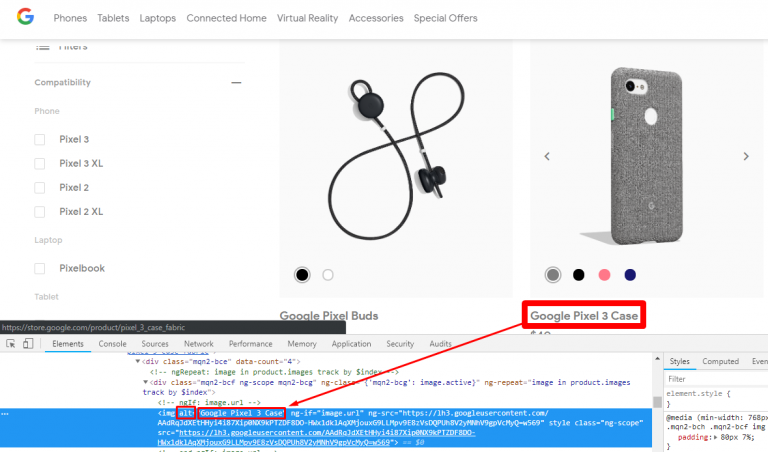
15. Audit of extra outbound links
Only link to other resources when it is relevant or necessary. Outbound links may result in traffic loss and make the website less attractive to search engines. At the same time, there are situations when links to landings, forums, social media, and other related resources facilitate promotion.
The website includes outbound links to 14 external Google subdomains and authoritative sites.
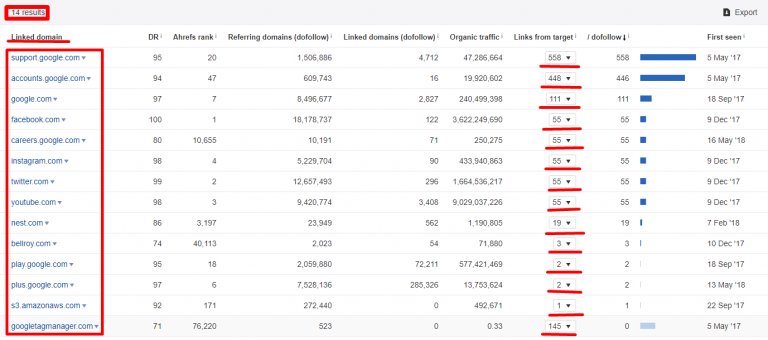
16. Audit of the indexing of the technical pages
Technical pages should be excluded from indexing not only with a robots.txt file but also by using meta tags in the HEAD element. Additionally, you should add a ‘rel=”nofollow”’ attribute to prevent following the links on closed pages.
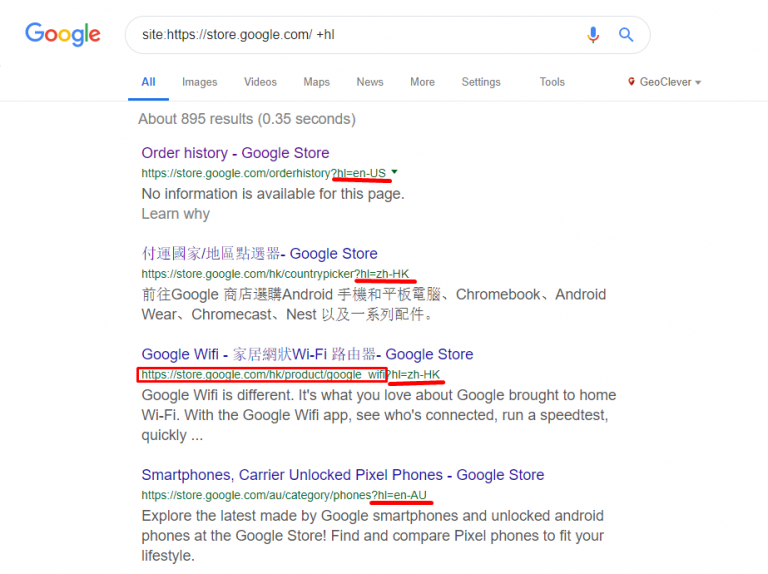
17. Website link mass
The site has an extensive link mass, as Google Store products are sold in 36 countries worldwide. It is referred to by 32,399 domains, with Google Play being the most active.
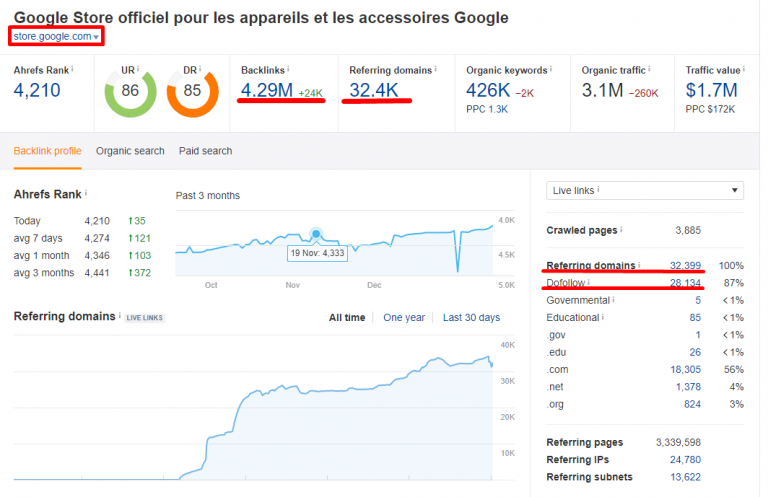
Except for Google Play, all domains with a “dofollow” attribute lead to various blogs and forums (32,404 links in total). There are also 5,746 domains with the “nofollow” attribute.
Best 5 SEO Audit Templates
One can find different audit templates on the market, But if you are looking for templates that do work, we are here to show you those. Let’s take a look at several really helpful SEO audit templates we have selected.
SEO Audit Template by Backlinko
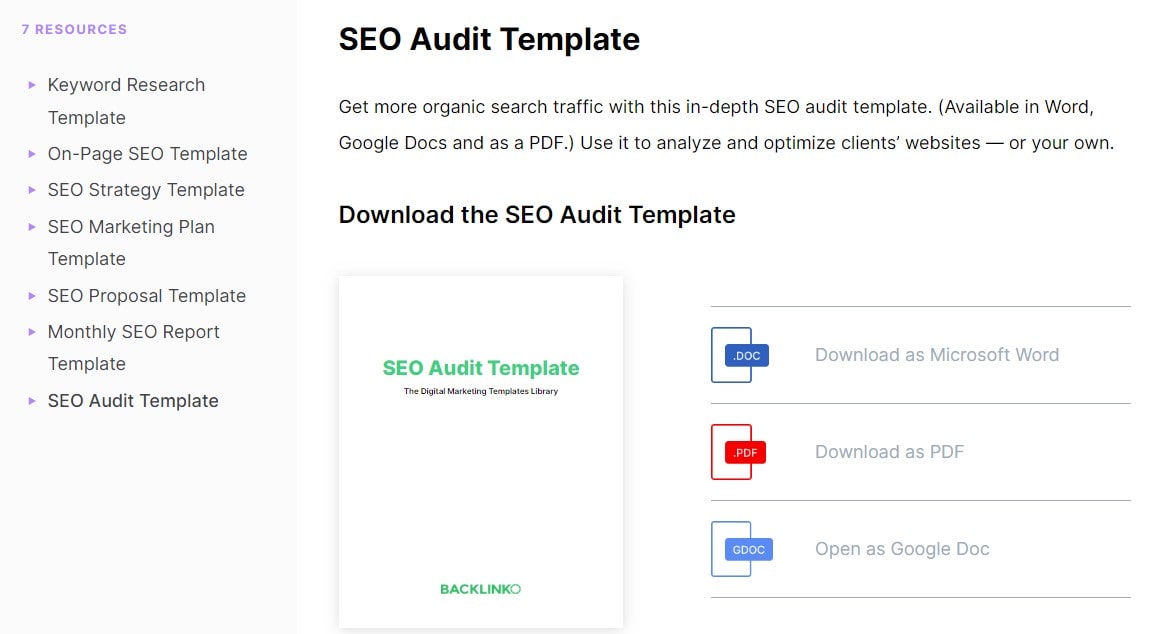
Backlinko guarantees their audit template will help you get more organic traffic. This audit template is available in several formats: Google Docs, Word, and PDF. The audit template is recommended for those eager to analyze and optimize sites.
Here are the components of the audit template:
- Content tweaks. With its help, you will be able to improve the content of your online resource.
- Off-page and on-page factors are other important audit features that will provide you with information on internal links, backlinks, etc.
- Last but not least – technical SEO aspects. You should always take them into account during SEO audits. Those are page speed, indexing, etc.
Using this audit template is really easy. Here is the procedure to stick to with the template:
- Download the audit template.
- Follow the audit template.
- If any improvements are recommended during an audit, stick to them.
- Several weeks later, you will see the result!
By following the simple procedure of this template usage, you will get beneficial results from the audit.
Comprehensive Technical SEO Audit Template
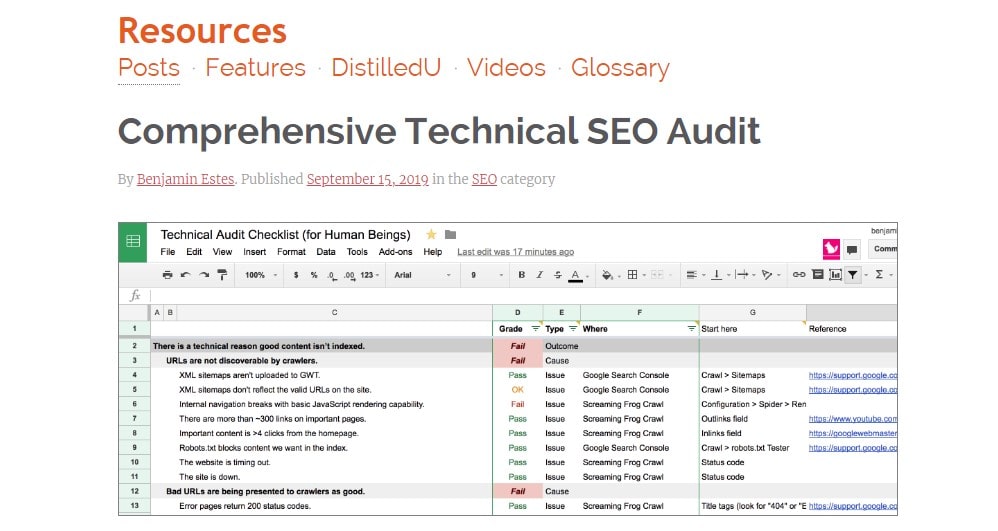
A technical audit using a smart template helps to solve many SEO tasks at once, thus increasing organic traffic and making the site more successful and nice-looking. A good technical audit inspects diverse aspects, helping you to improve your site. That’s why you need an audit template. With a good audit template, you will never forget what you’ve done and what you haven’t. A comprehensive technical SEO audit checklist includes many things, and your task is to check them. For example, you will be given the following:
- XML sitemaps are uploaded to GSC.
- XML sitemaps accurately reflect valid URLs on the site.
- The website isn’t timing out, and much more.
When working with this template, your task is to mark each SEO issue with one of the following: Pass (no problems with it), OK (it doesn’t seem relevant), or Fail (something is wrong).
The Technical SEO Audit Template by Diggity Marketing

A Technical SEO audit is a process that is meant to find and solve the problems that could make it harder for Google to index your web resource.
Common issues frequently discovered during a technical SEO audit include load speed, links, mobile device problems, etc.
The technical SEO audit is an essential part of a website’s strategy and is one of the first things that you must consider if you are eager to improve your visibility. Using a template in this regard will be helpful. So, this technical SEO audit template includes:
- Meta Robots Tag.
- X-Robots Tag.
- Robots.txt.
- Index Bloating.
- XML Sitemaps.
- Canonical Tag.
- Redirects.
- 404 Errors.
- Speed.
- Mobile SEO and more.
Use the template to easily audit your site for technical SEO issues.
SEO Audit Template by Dalton Luka
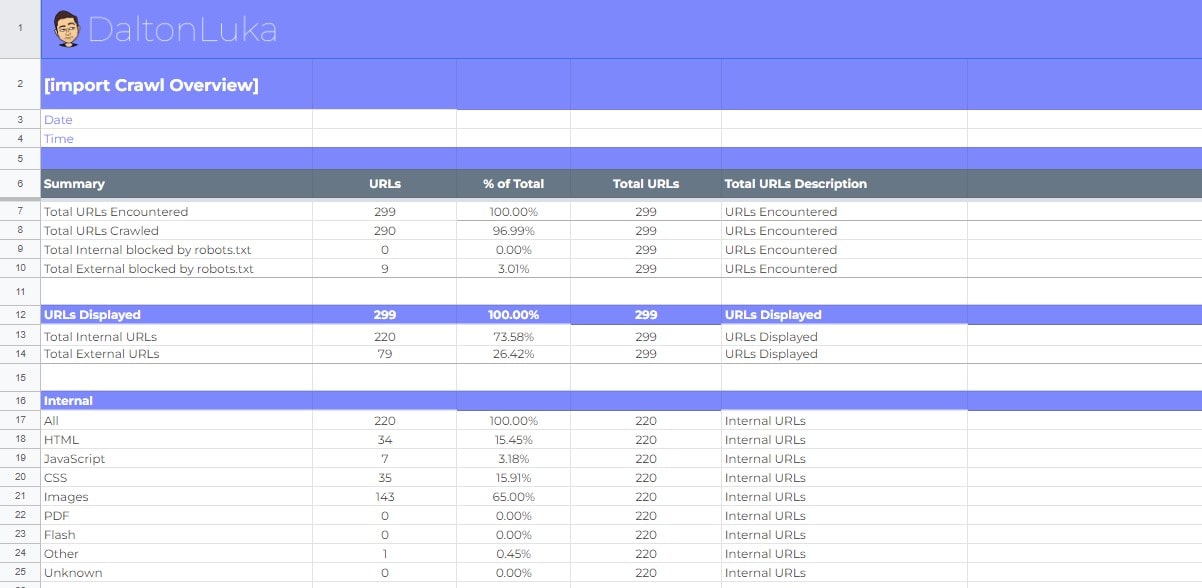
Dalton Luka offers several SEO Templates that will help to increase organic traffic, conversions, and sales. Here are the template solutions offered:
- Website Audit Template. Utilize this option to get actionable insights on how to improve.
- SEO Checklist. This one offers an SEO audit and helps to find an optimal optimization strategy.
- On-page SEO Audit Template. This is one of the best solutions among templates. This SEO audit template analyzes many aspects: pagination, directives, sitemaps, page speed, link metrics, description, and more.
Choose any of the SEO audit templates designed by Dalton Luka and start auditing your web resource.
SEO Audit Template by Clearpath
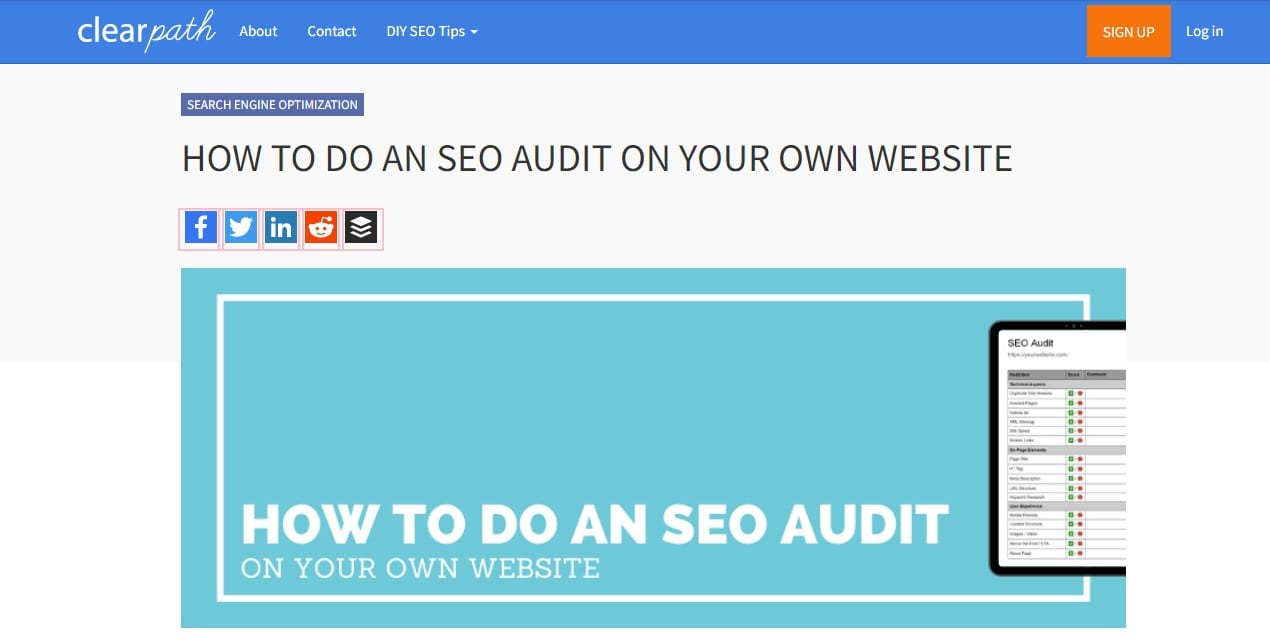
This audit template is a great choice if you want to use a minimal amount of marketing tools. If you may not have too much money at the beginning of your journey, expensive tools are not an option.
This audit template includes the technical aspects, on-page elements, and user experience. Those are:
- Content structure.
- XML sitemap.
- Duplicate site versions.
- Indexed pages.
- Robots.txt.
- Page title, H1, description, URL structure, etc.
- Mobile friendly.
- Site speed.
- Broken links.
- Images/video and more.
The template for SEO analysis by Clearpath is indeed a nice option.
Create a concise template for an SEO audit
To make your template really professional and reliable, create it simultaneously with the SEO audit recording all shortcomings and necessary changes. If you decide to compile the template later, you may forget many important SEO nuances after completing the full technical audit.
Remember about an SEO Audit
To conclude, here are the main insights of this article:
- If you open a pub, but nobody finds out about it, you will have no clients and revenue.
- If you don’t carry out regular SEO audits, you won’t be able to consolidate your position as a search leader, and the competitors will outpace you. Use the smart templates to simplify the task.
- SEO is a must for everyone who plans to develop their website for at least 10 years. It’s inevitable to have free organic traffic.
I hope the described 17-step guide and one of the templates will significantly simplify the SEO auditing of your website.
